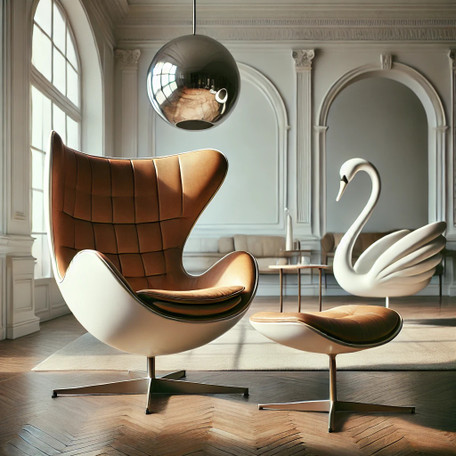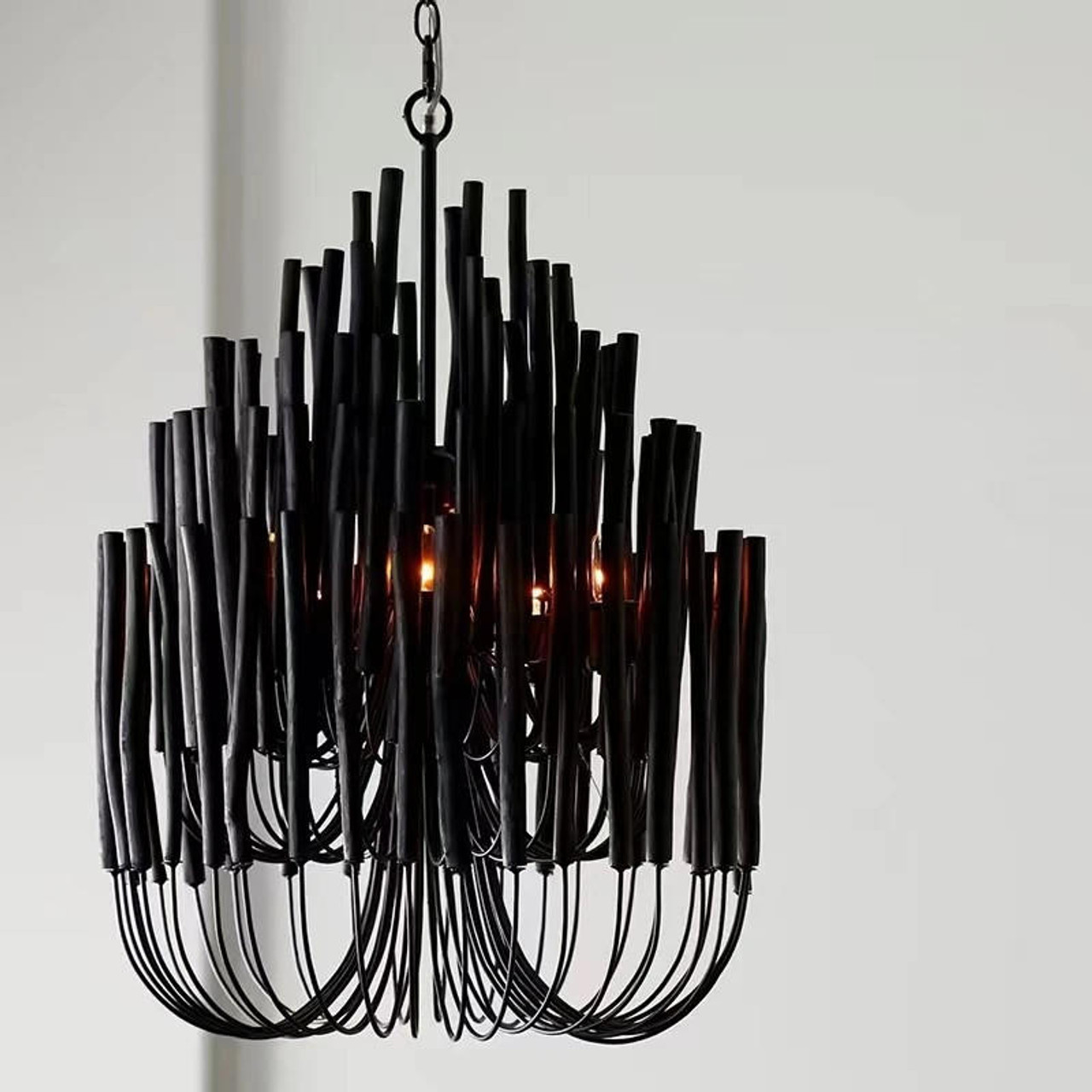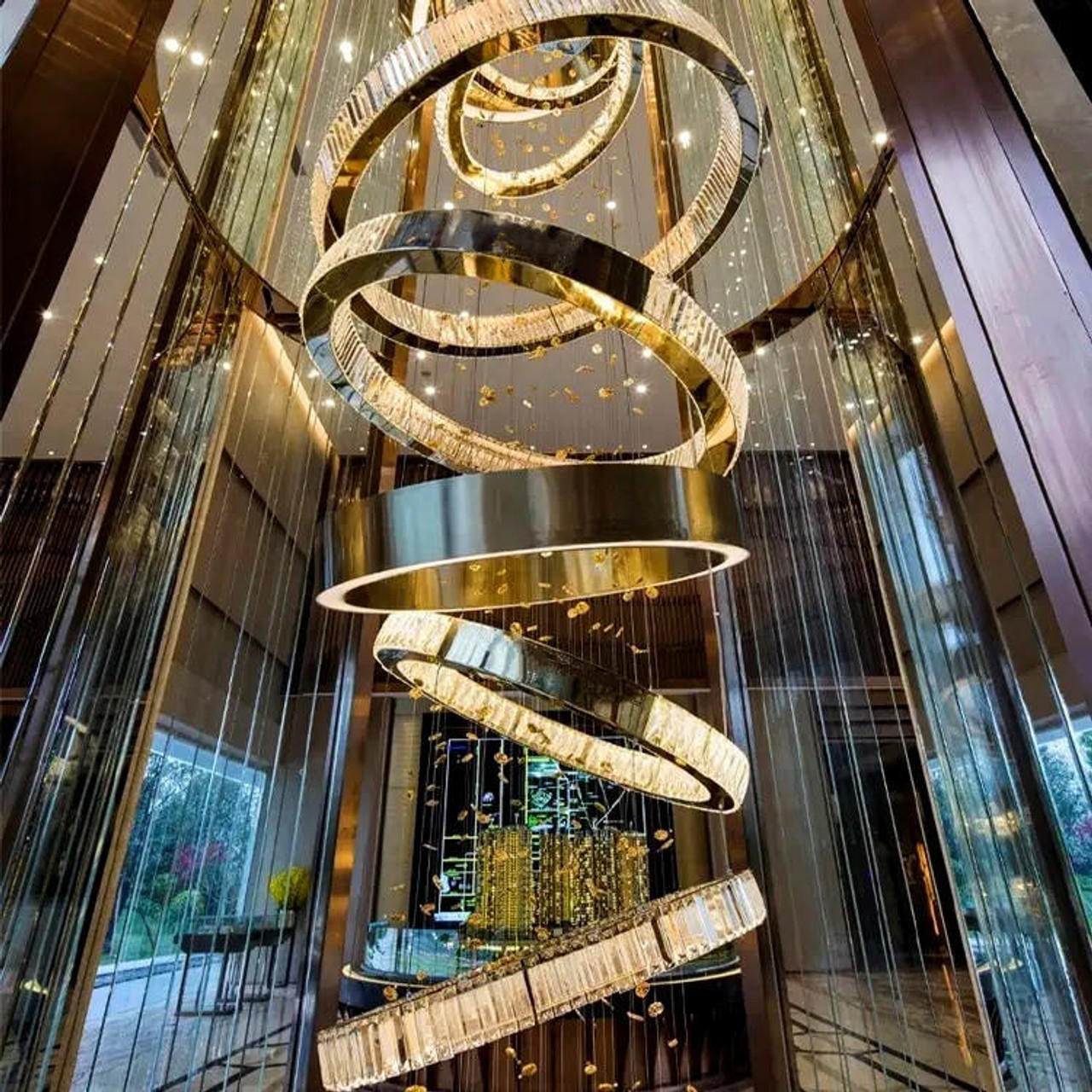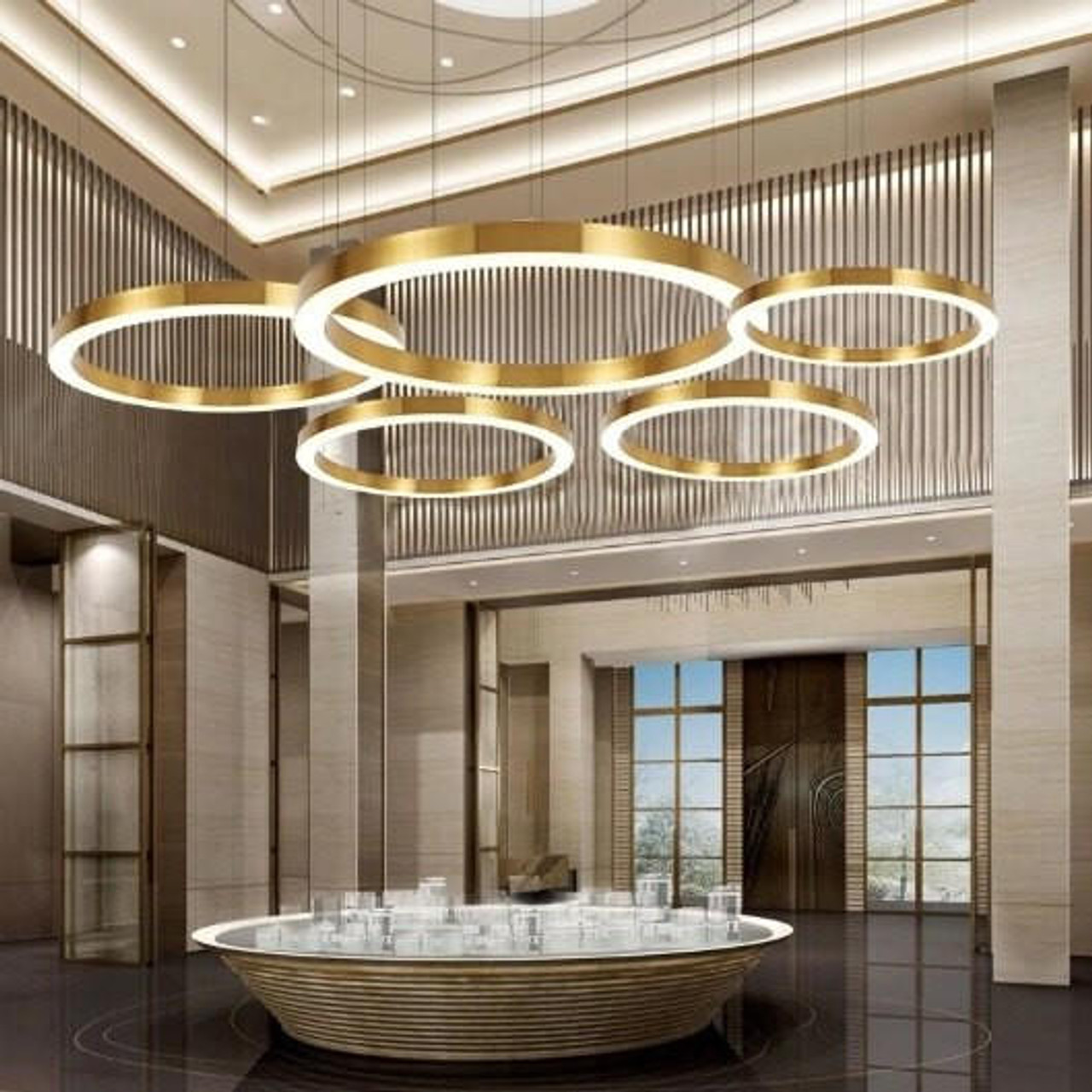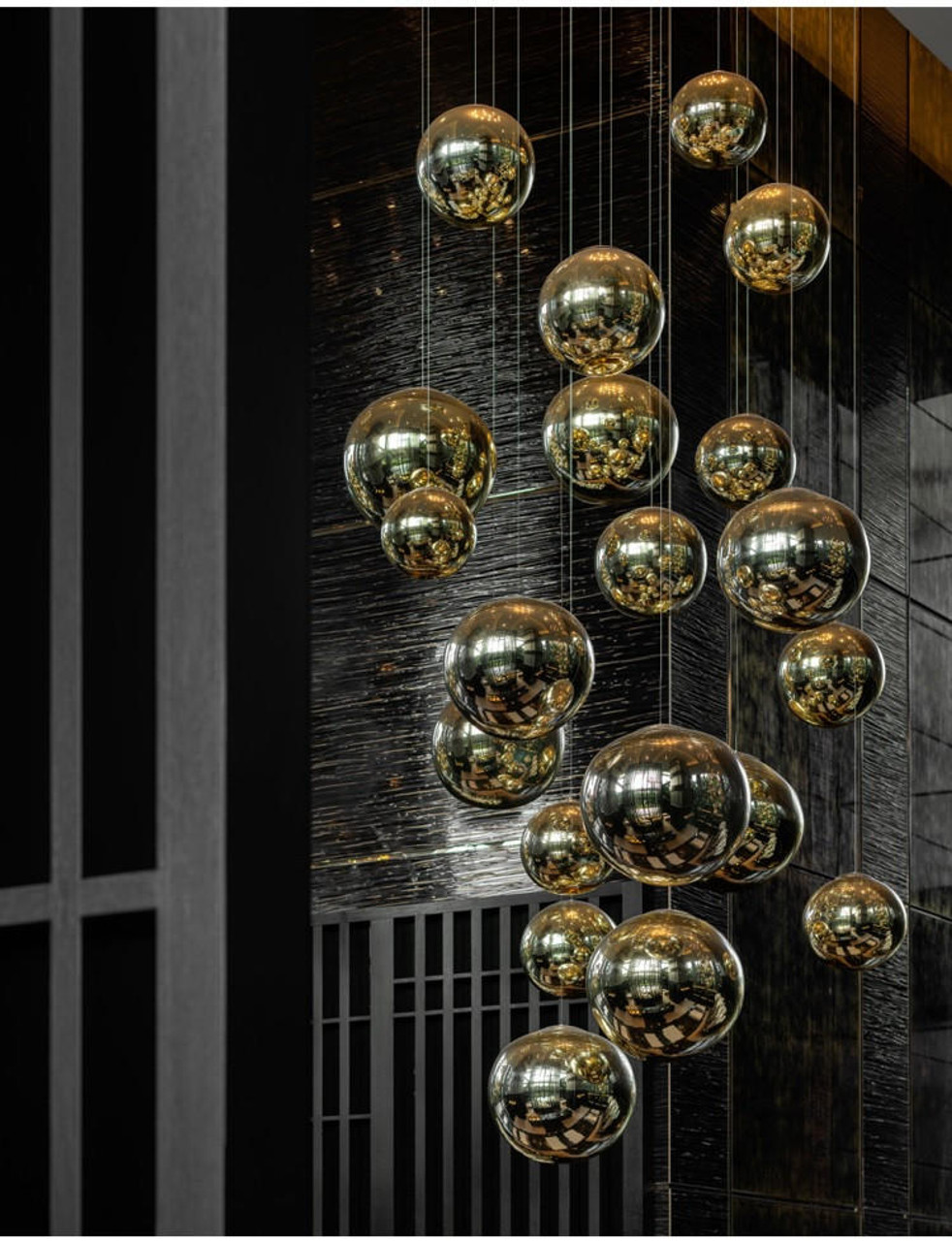Arne Jacobsen: The Egg Chair and Swan Chair – Designs of Timeless Elegance and Surprising Value
Posted by Mary Jenkins - Architectural designer on 4th Sep 2024
There are few designers whose work transcends time, fashion, and geography, but Arne Jacobsen—Danish architect and furniture designer—stands firmly in this rare category. Jacobsen's name is synonymous with two pieces of furniture that have achieved iconic status: the Egg Chair and the Swan Chair. Initially conceived as modern, functional, and affordable solutions for mid-century interiors, these chairs have become timeless symbols of mid-century modern design, prized today as luxury collectibles in the world of high design. The trajectory of these two designs—from affordable modernist staples to highly coveted masterpieces—reveals much about the evolution of design culture, consumer values, and the persistent allure of simplicity done with sophistication.
A Visionary of Modern Design
Arne Jacobsen was a visionary who believed in modernism's promise to create objects that were both functional and beautiful. Born in 1902 in Copenhagen, he trained as an architect, a discipline that would inform his holistic approach to design. Jacobsen’s early architectural works reflected the International Style, characterized by clean lines, functional forms, and an absence of ornamentation. This ethos extended naturally into his furniture designs, where simplicity and elegance combined with an understanding of human comfort and ergonomics.
By the mid-20th century, Jacobsen’s reputation as one of Denmark’s leading architects was well established. His commission to design the SAS Royal Hotel in Copenhagen in 1956, often referred to as the world’s first design hotel, marked a pivotal moment in his career. For this project, Jacobsen not only designed the building itself but also every interior detail—down to the furniture, lighting, and textiles. It was here that the Egg Chair and Swan Chair were born.
The Birth of the Egg Chair
The Egg Chair, introduced in 1958, was designed specifically for the lobby and lounge areas of the SAS Royal Hotel. Its form was revolutionary at the time—organic and sculptural, yet unmistakably modern. Jacobsen conceived the Egg Chair as a single-piece shell made from foam-covered fiberglass, a material that allowed for the creation of fluid, curved shapes that were both comfortable and visually striking. The chair’s high, enveloping back and curving sides provide a sense of privacy in public spaces, an aspect that distinguished it from other seating options of the time.
What made the Egg Chair revolutionary was its departure from the more rigid, boxy shapes that dominated furniture design in the post-war era. Instead, the chair embraced the human form, offering both aesthetic appeal and functional comfort. Jacobsen’s mastery of ergonomics is evident in the way the chair cradles the body while offering support. The chair’s form cocoons its occupant, creating a private sanctuary even in busy environments—a feature that made it ideal for the SAS Royal Hotel’s bustling lobby.
The Swan Chair: A Companion to the Egg
While the Egg Chair is perhaps Jacobsen’s most famous design, the Swan Chair, also introduced in 1958, stands as a complementary counterpart. Designed for the lounge and reception areas of the SAS Royal Hotel, the Swan Chair shares the same innovative use of materials as the Egg Chair but offers a more open, inviting shape. The chair’s graceful, curving lines resemble the wings of a swan in mid-flight, a nod to Jacobsen’s appreciation for nature and organic forms.
The Swan Chair’s low back and flowing contours make it an ideal choice for conversational spaces, where its sculptural form encourages social interaction without the formality of more traditional seating. Like the Egg Chair, the Swan Chair was initially conceived as a practical and affordable piece of modernist design, intended to fill the public spaces of the SAS Royal Hotel while maintaining Jacobsen’s commitment to elegance and simplicity.
Affordable, Modernist Masterpieces
What is remarkable about both the Egg Chair and Swan Chair is that they were not designed as exclusive, high-end luxury items. On the contrary, they were conceived as functional, affordable pieces of modern furniture. Jacobsen believed in the democratic potential of modernism, where good design should be accessible to all, not reserved for the elite. The chairs were produced using innovative materials and industrial processes that allowed them to be manufactured at relatively low cost compared to traditional handcrafted furniture.
At the time, the Egg and Swan chairs were sold as part of the furnishings for the SAS Royal Hotel, and eventually, they became available to the public through Danish furniture manufacturer Fritz Hansen, a company with which Jacobsen had a long-standing collaboration. In the 1950s and 60s, these chairs were priced within reach of middle-class consumers, especially in Denmark and other parts of Europe where modernist design was gaining popularity.
Their affordability, however, did not detract from their quality. Each chair was constructed with meticulous attention to detail, using high-quality materials that ensured durability. The foam shell of the chairs was upholstered in leather or fabric, and they featured a rotating, polished aluminum base—details that would come to be associated with Jacobsen’s signature style of balancing practicality with luxury.
From Affordable Design to Collectible Icon
Fast forward to today, and the narrative around the Egg Chair and Swan Chair has shifted dramatically. No longer are these chairs seen as merely functional pieces of modernist design; they have entered the realm of collectible art. Vintage editions of the Egg and Swan chairs, especially those produced in the early years of their release, are now highly sought after by collectors and design enthusiasts. These pieces, once affordable, have appreciated significantly in value, reflecting the growing cultural and historical importance of mid-century modern design.
Original Egg and Swan chairs from the 1950s and 60s can now fetch tens of thousands of dollars at auction. The reasons for this are multifaceted. First, the resurgence of interest in mid-century modern design over the past few decades has created a strong demand for authentic pieces from this era. Jacobsen’s designs, in particular, have come to symbolize the best of Scandinavian modernism, with their clean lines, organic shapes, and focus on functional beauty.
Additionally, the fact that the Egg and Swan chairs were designed by a master architect like Jacobsen adds to their allure. Jacobsen’s holistic approach to design—where architecture, furniture, and interiors were all part of a unified vision—means that his work is revered not only by furniture collectors but also by architectural historians and cultural critics. Owning an Egg or Swan chair is not just about having a piece of furniture; it is about possessing a piece of design history.
The Enduring Appeal of Jacobsen’s Designs
So, why do the Egg Chair and Swan Chair continue to resonate with contemporary audiences, more than 60 years after their creation? The answer lies in the timelessness of their design. Jacobsen’s ability to marry form and function has ensured that these chairs remain as relevant today as they were in the 1950s. The sculptural qualities of the chairs make them striking centerpieces in any room, while their ergonomic design ensures comfort and practicality.
Moreover, the chairs’ versatility has contributed to their enduring popularity. While originally designed for a hotel lobby, both the Egg and Swan chairs have found their way into a variety of settings—from private homes to office spaces, airports, and even art galleries. Their ability to complement both minimalist interiors and more eclectic environments speaks to Jacobsen’s genius in creating designs that transcend trends.
The Legacy of Arne Jacobsen
Arne Jacobsen’s impact on design extends far beyond the Egg Chair and Swan Chair. His architectural works, including the SAS Royal Hotel, the National Bank of Denmark, and numerous residential projects, continue to inspire architects and designers around the world. But it is perhaps through his furniture that Jacobsen’s legacy is most strongly felt in everyday life.
The Egg Chair and Swan Chair represent the epitome of Jacobsen’s philosophy: that good design should be functional, accessible, and beautiful. What began as affordable, modernist seating has become an enduring symbol of design excellence, appreciated not only for its aesthetic qualities but also for its history and craftsmanship.
Today, reproductions of the Egg and Swan chairs are widely available, allowing a new generation to experience the comfort and elegance of Jacobsen’s designs. However, for those fortunate enough to own an original, these chairs serve as reminders of a time when modernism promised to revolutionize the way we live, work, and interact with the world around us.
In a world where furniture is often treated as disposable, the lasting appeal and value of the Egg Chair and Swan Chair offer a compelling counterpoint. These designs, once intended to be affordable and accessible, have become icons of 20th-century design—testament to the enduring power of simplicity, innovation, and the human touch in the creation of everyday objects.
As Jacobsen himself might have said, the measure of a great design is not how much it costs, but how well it serves the people who use it. And by this measure, the Egg Chair and Swan Chair are indeed great designs—timeless, elegant, and forever valuable.

